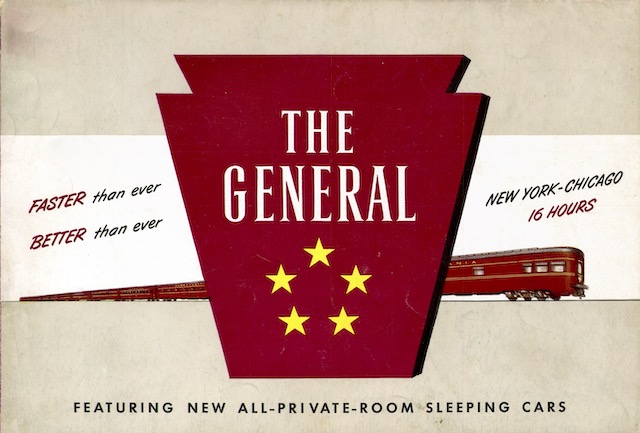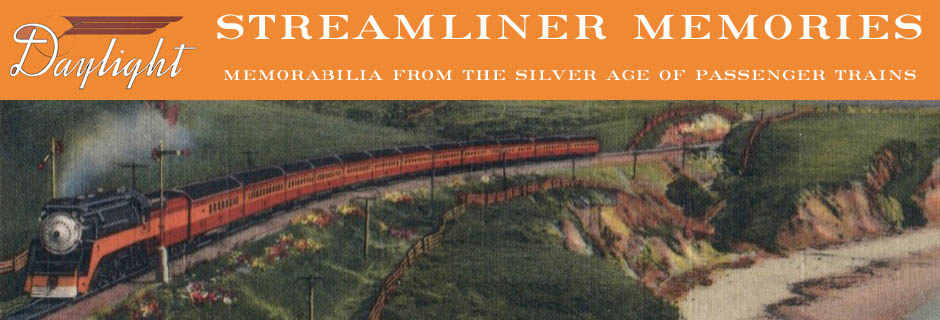The Pennsylvania had a dozen trains a day between New York and Chicago in 1929, declining to as few as eight during the Depression. In 1937, it added a new train, the General. A railroad with that many trains on a single route must have had a hard time coming up with evocative names for all of them; some other New York-Chicago trains had names like Commercial Express and Red Knight in 1929 and Golden Arrow and Valley Special in 1937. I imagine the name General was a reflection of the increasing militarization of the world in the late 1930s.
 Click image to download an 4.8-MB PDF of this brochure.
Click image to download an 4.8-MB PDF of this brochure.
The General was conceived as a no extra fare train that was almost as fast as the Broadway. As such, it may have been a major reason why the Broadway‘s ridership was so poor. In any case, when it was inaugurated, the General took 17-1/2 hours compared with the Broadway‘s 16-1/2.
When the Fleet of Modernism was introduced, the General was the only one of the four “modernized” trains not to have an observation car. While the Broadway was all Pullman, the General initially had coaches as well as sleeping cars. In 1942, the coaches were put on a separate train with a similar timetable known as the Admiral.
After the war, the Pennsy reequipped the Broadway with all-new cars (including a blunt-end observation car) and the General inherited the Broadway‘s old equipment, including its round-tailed observation car. The above brochure is undated, but it pictures both Diesel locomotives and a round-tailed observation car, so it is from the post-war era, probably 1948 or 1949.
Pennsylvania’s post-war trains also received a simplified paint scheme to replace the two-tone red designed by Raymond Loewy. Loewy surrounded the windows with a dark red and used a light red for the rest of each car; the post-war colors applied the dark red everywhere and replaced eight gold pinstripes with three yellow ones. As simplifications go, this one wasn’t too bad and I suspect many passengers never noticed.
